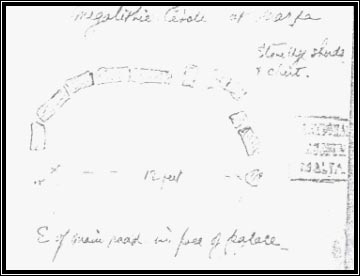At Ta’ Msid
At Ta’ Msid, in Marfa, there was a stone circle, which unfortunately, in recent times were buried under a large amount of rubble.
Ta’ Msid remains were discovered by the Curator of the Archaeological Museum.;, Temi Zammit with the help of Mr. C. Rizzo in 1916. While they were reporting they found a stone circle that probably formed part of a larger structure. Nine megalithic stones formed a round chamber with a diameter of 3.66 metres. In this chamber a number of flint and pottery shreds were found, which were dated to the Neolithic Period. Zammit in his report stated that this structure was in a bad state of repair and emphasized also on the worthiness of being cleared and surveyed. 1
These remains were never surveyed and unfortunately, in 1993 they were buried under a large amount of rubble. Therefore, no excavation could be carried out because probably they were destroyed forever. 2

References:
1 Government of Malta, ‘Archaeological Section’, Museum Annual Report 1917-19.
2. Ernest Vella., ‘Il-Wirt Arkeologiku tal-Qedem’, Joe Catania (ed), Il-Mellieha: Mal-Milja taz-Zmien, Kunsill Lokali Mellieha, Malta, 2002, pp 26-27.
Researched and Written by: Charles Debono B.A.(Hons) History